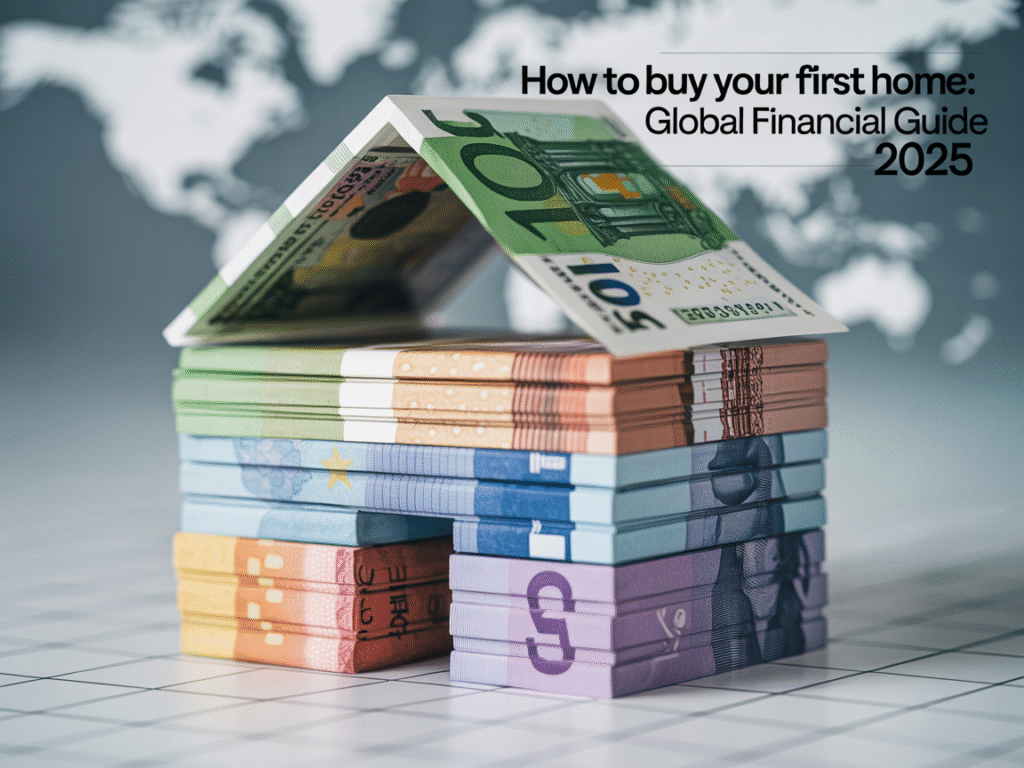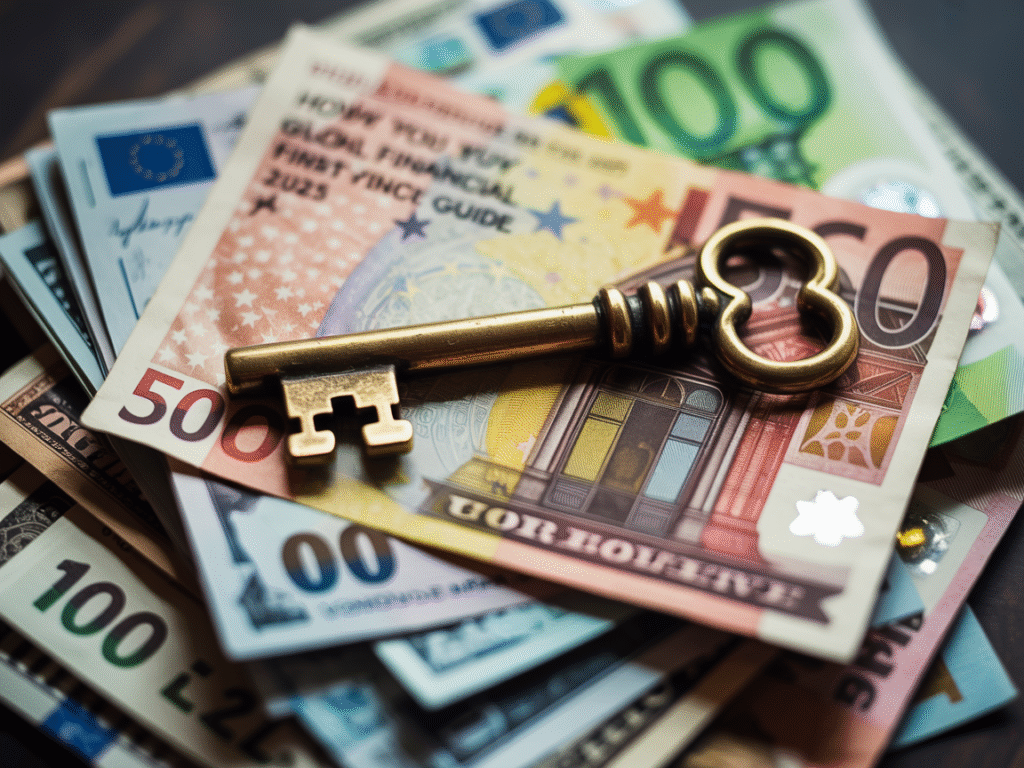
Look, I know buying a house feels like one of those cosmic life milestones: exciting, nerve-wracking, and confusing as heck. Whether you’re in the U.S., Europe, Latin America—or anywhere else globally—the journey is pretty similar. You’re probably thinking, “Where do I even begin?” Trust me, I’ve been on that rollercoaster too.
So I’m not gonna hit you with slides of jargon or pretend there’s a one-size-fits-all guide. Instead, consider this a chat over coffee with someone who’s been there: I got stuck in mortgage applications, freaked over down payments, and yes, even messed up a few times. But guess what—I came out the other side, and you will too.
Here’s a friendly, practical guide to help you buy your first home—without losing your mind.
1. Start with Your Why (And Your Budget)
The truth is, jumping into the housing market without being crystal on why you want a home is a recipe for regret.
- Are you settling down?
- Planning to rent it out someday?
- Tired of monthly rent increases?
Think about location too: city, suburb, or beach-side? Each has different price tags worldwide.
When it comes to budget, a good rule of thumb is: your total housing cost shouldn’t exceed 30–35% of your income. That includes mortgage, insurance, taxes, and maintenance. Use apps like Mint or YNAB to see what you can really afford.
Ojo con esto: Don’t forget closing costs or agents’ fees—they sneak up fast. I paid an extra 4% on my own closing costs—no fun surprise.
2. Check and Build Your Credit—or Equivalent
In places like the U.S., the interest rate you get depends on your credit score. Elsewhere, you might need to show your “creditworthiness” via payroll records or bank statements.
If your credit (or score) needs work, don’t sweat it—that’s normal. You can improve things by:
- Clearing small debts
- Paying bills on time
- Not applying to a dozen credit products (lenders notice!)
Two real people I know—Carlos in Mexico City and Sarah in Toronto—both had to raise their scores by about 50 points before lenders gave them rates they were okay with. Took a few months, but it made a huge difference.
3. Save that Down Payment (But Don’t Go Overboard)
Down payments vary by country—5% in some European countries, up to 20% or more in others like the U.S.
If that feels overwhelming, start small. Set aside even 200 USD/EUR a month. Te lo digo por experiencia—small steps lead to big results. After a year, that’s $2,400—plus you might tap into local first-time buyer programs or family help.
Beware of draining your savings completely, though. You’ll need some cushion for emergencies—like leaky roofs or broken heaters.
4. Explore Mortgage Options Around the Globe
United States
- Fixed-rate mortgage (FRM): A steady monthly payment—what most people prefer.
- Adjustable-rate mortgage (ARM): Lower rate in the short term, but risky if rates go up.
Europe
- Fixed mortgages exist, but a lot of borrowers opt for variable rates tied to indexes (like Euribor).
Latin America
- You might find mortgages in your local currency or in USD. Often with shorter terms (10–15 years).
For example: Maria in Buenos Aires got a U.S. dollar–linked mortgage. Payments felt stable, but she had to budget around inflation fluctuations—so she made extra payments when she could.
5. Get Pre-Approved (Not Just Approved)
Pre-approval means a lender looked at your income and documents and gave you a green-light—within limits. That helps you shop smart and puts you in a stronger position with sellers.
I remember being house-hunting in Miami with a friend who didn’t get pre-approved. Every time we found a promising home, she’d lost out because other buyers were faster, with proof they could afford it. Seeing her wish she had pre-approval? Not fun.

6. Shop Around (Please Don’t Just Ask Your Mom’s Friend)
Rates and fees vary. They totally do. Don’t settle for the first offer. Compare:
- Interest rate
- Down payment needed
- Terms like adjustable periods or prepayment penalties
Websites like Zillow, Bankrate, Ratehub, or local mortgage brokers can help you compare in your region.
7. Crunch the Numbers
Down payment, rate, taxes, insurance, closing costs, maintenance—put it all in. Use online mortgage calculators for your country.
I once skipped that step due to excitement—I thought I could handle the house maintenance just because I felt ready. But then the AC died, followed by a busted water heater within a month. My “affordable” house suddenly felt expensive because I hadn’t budgeted repairs.
8. Think Beyond the Purchase
There’s more to home-owning than just monthly payments:
- Maintenance: Roofs, plumbing, termites—stuff breaks.
- Insurance & taxes: Property taxes vary wildly. Insurance too.
- Future plans: If you might move in a few years, think resale value. If you’re keeping it for decades, maybe that fixer-upper’s worth the work.
9. Lean On Resources That Help
- “Your Money or Your Life” – Great book on mindful budgeting
- Mint, YNAB, PocketGuard – Great budgeting apps
- Government programs: In the U.S., check FHA loans or VA loans if you’re a veteran. Other countries have first-time buyer incentives or subsidies—you just have to look.
Conclusion: You’ve Got This—One Step at a Time
Buying your first home can feel intimidating, but remember—we all start somewhere. Nobody’s perfect at this. I’ve referred to this process as “adulting on steroids,” but you know what? It’s a journey filled with growth.
Break it down:
- Know why you want to buy
- Set a budget and save
- Improve your credit
- Explore mortgage options
- Get pre-approved
- Compare offers
- Do the math
- Plan for ownership beyond closing
And celebrate the small wins—first deposit, first pre-approval, first mortgage meeting, first house you tour. It all adds up.
You’re not just buying a house—you’re building your financial future. So take a breath, be patient, and ask questions. I’m rooting for you.
If you’d like a printable checklist, mortgage comparison sheet, or help finding local programs in your area, just say the word. I’ve been down this road, and I’ve got your back.
